How to use social proof for high-converting landing pages

It takes just seconds for customers to decide whether they are going to stay on your site or bounce.
With such little time available, landing pages must quickly capture and convert customers. It is also your first impression to audiences, and directly tied to boosting lead generation. When done right, landing pages show the customer what value is being offered and what action they are supposed to take.
Providing social proof is one of the best ways to move customers towards this goal.
Social proof is a powerful way to influence customers, and in doing so, increase landing page conversion rates. In this article, we’ll cover what social proof is, case studies, and how you can make the best use of social proof for your landing pages.
What is social proof?
Social proof is how the actions of other people influence our decision making.
Let’s say you’re hungry and looking for somewhere to grab a bite to eat. You remember your neighbor telling you about a new burrito shop down the street. A quick Google search shows 5-star ratings and plenty of rave reviews from customers. Having a good feeling about this spot, you head to check it out and see there’s a line out the door. This burrito must be pretty good then, right?
This is an example of social proof in action.
Everything from the neighbor’s initial suggestion, to online reviews and large crowds, influenced your decision of where to eat.
Using social proof for marketing is not a new concept. In fact, social proof has always been around. Think of New York Times Best Selling lists, professional athletes sporting Nike gear, or anything Oprah touched in the early 2000s.
But now it’s no longer only celebrities telling us what to buy or our friends giving their personal recommendations.
Instead, social proof is online and amplified.
Social proof can come from almost anyone from anywhere. It’s the posts on Instagram showing what the new trends are. The Google Reviews giving first-hand accounts from previous customers. Or the YouTubers telling us which products are their favorites.
When used in digital marketing, the use of social proof can be influential and far-reaching. And the best part is there are several different types of social proof, each adding a unique value point to attract and convince customers throughout the sales process.
Types of social proof for landing pages
With more people turning to online reviews and trusting recommendations from people beyond their own social circles, social proof can be highly effective for converting visitors into customers.
Let’s go back to the restaurant example from above.
Interest was initially sparked by the recommendation from a neighbor. But that was just the starting point. Buying decisions often require further validation and reasoning. So much so that the average shopper reads 10 online reviews before making a purchase decision.
The first good sign was the high ratings. Would you rather eat somewhere with a 5-star rating or 2-star? That is a no brainer. Then there were the favorable customer reviews, which matter just as much as the initial recommendation. In fact, according to BrightLocal’s Consumer Review Report, 88% of shoppers trust user reviews as much as personal recommendations. And finally to seal the deal was the line out the door, showing how popular the restaurant was.
Without these forms of social proof, you may never have tried this delicious burrito shop, or even found it in the first place.
Much like this scenario, social proof can add trust and credibility to your brand which usually leads to more sales. Using social proof for landing pages can be a game-changer in capturing the attention of visitors and convincing them to make a purchase.
Interested in adding social proof to your site?
Here are examples of social proof you can use to create high-converting landing pages:
1. Customer testimonials
Testimonials are an endorsement of your brand given by customers themselves. Featuring your existing customers makes your brand more relatable, as audiences can see who is using your products or services and why they love them.
Testimonials are typically a short quote or statement from the customer. However, it could also be more in-depth, such as a short video or customer profile.
Here are some questions you can ask for great testimonial content:
What problem(s) did you have?
What made you go with our business?
How do you use our product/service?
What benefits have you seen?
What do you love most?
What makes us unique?
What has made you stay a customer of our business?
Along with their quote, use your customer’s photo and name alongside it (if they agree to it, of course). If you are a B2B, feature the companies who are your customers rather than the individuals themselves by including the company logo. It’s best to feature recognizable brands whenever you have the chance.
For example, take a look at how Zoom uses both written and video testimonials to add social proof.
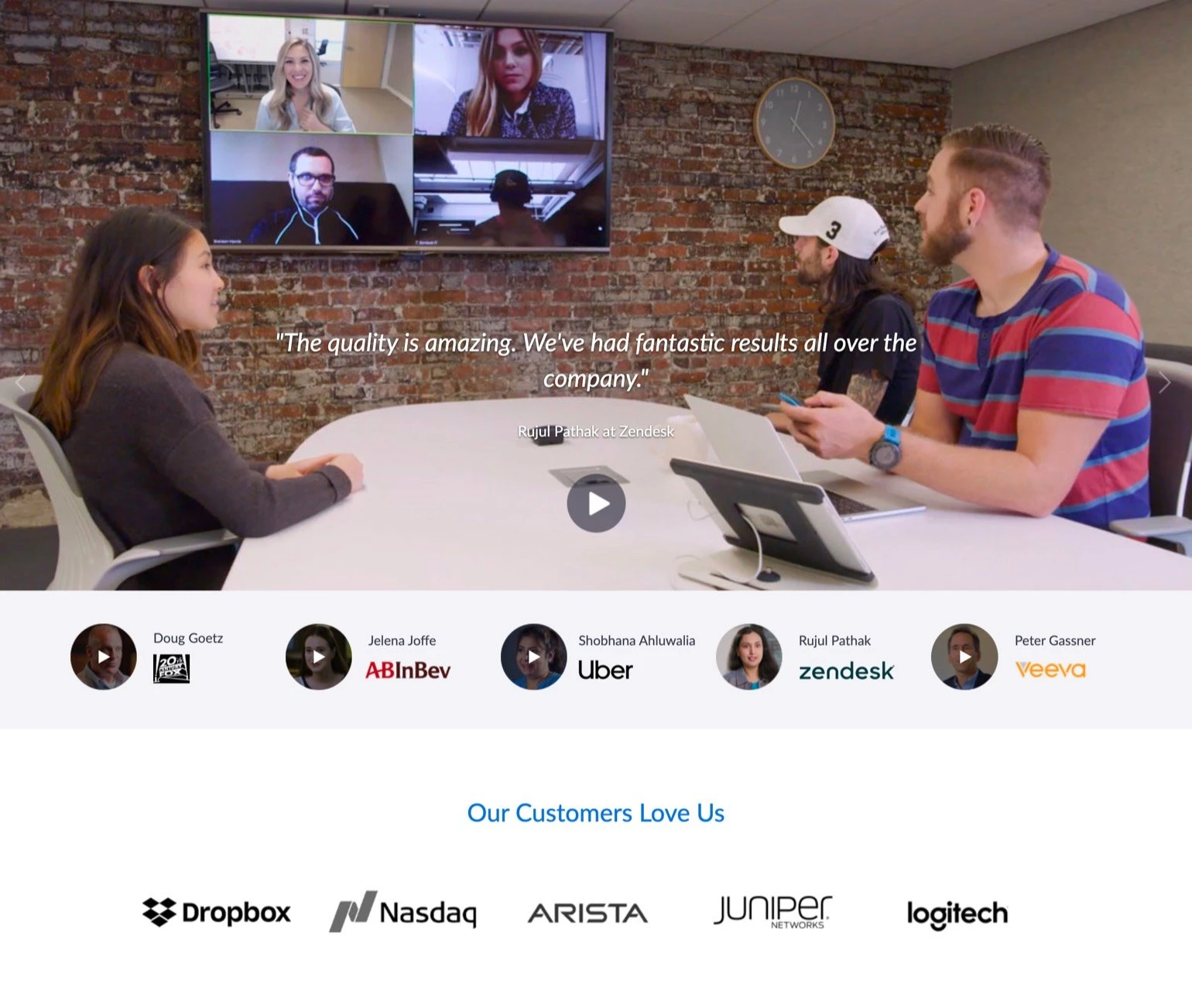
This combination can be especially effective as people not only see the customers but also hear them in their own words, making it even more authentic and relatable.
2. Customer reviews
Much like testimonials, reviews can be used to give a first-hand account from your customers. Think of this as virtual word-of-mouth marketing.
And this is the most important form of social proof, with 97% of consumers saying online reviews impact their purchasing decisions.
Customer reviews can be featured directly on the landing page with the text, customer name, and image. These reviews can be taken from your own website or from 3rd party review sites like Google, Amazon, Yelp, etc.
If your landing page is for a specific product, it would be useful to include that specific product reviews and a CTA to buy the product directly.
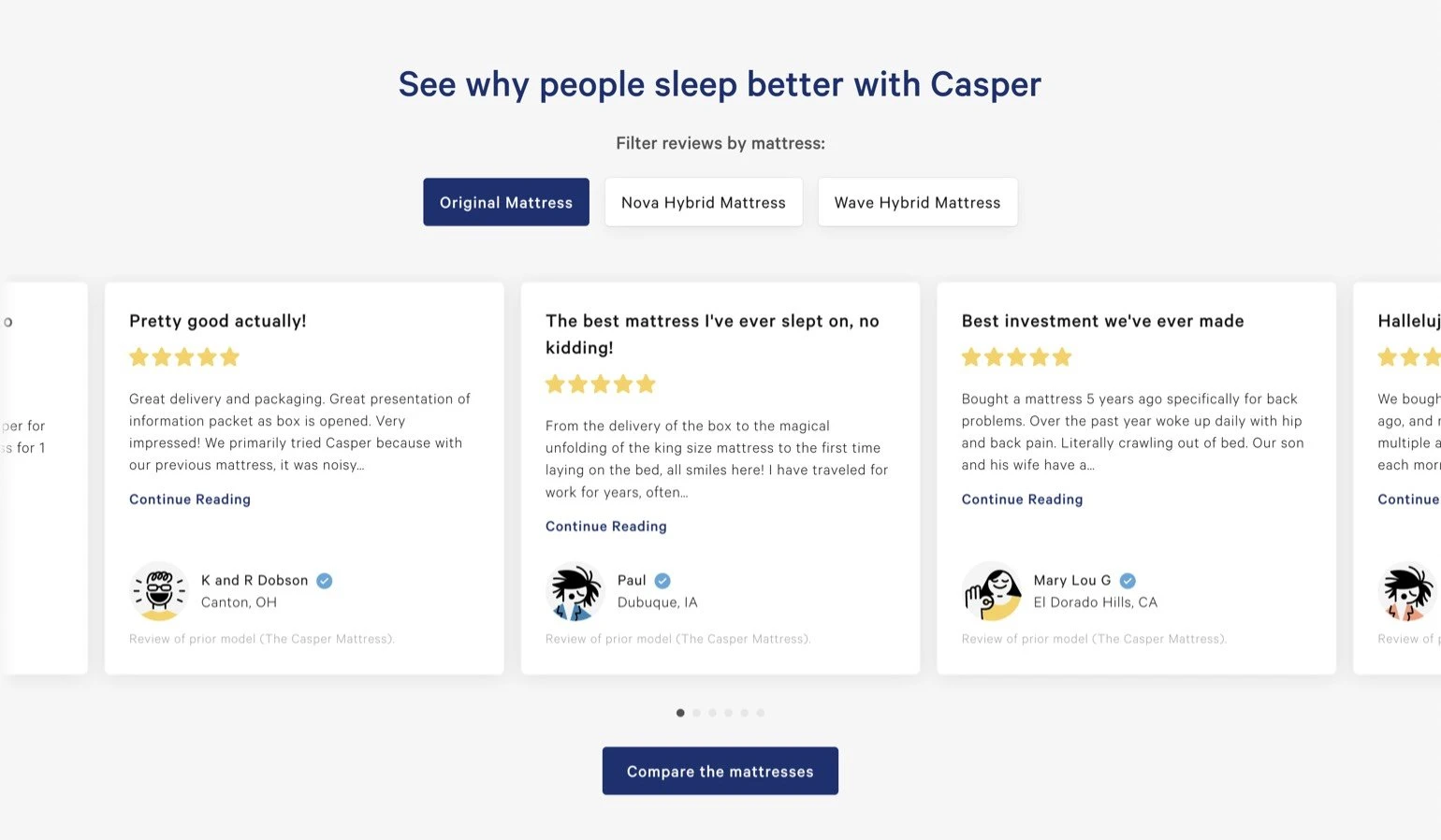
Additionally, customer reviews can be included in other elements of the landing page. For example, Casper mattresses has a dedicated landing page to showcase their positive customer reviews. Their page includes the headline: “See why customers love Casper”, and then features customer reviews, star ratings and customer comments.
3. Expert, influencer and celebrity endorsements
You can leverage the influence of top thought-leaders in your industry by featuring endorsements.
These endorsements can come from industry experts with authority and knowledge, such as a dentist endorsing a toothbrush. Or they could come from those key people in certain industries, such as a magazine editor endorsing a clothing brand.
Endorsements can also come from influencer marketing—who, thanks to social media platforms, can be almost anyone who has gathered a large online following. Influencers can range from high-profile celebrities like Kylie Jenner, all the way to local micro-influencers who have around 10,000 followers within a certain niche.
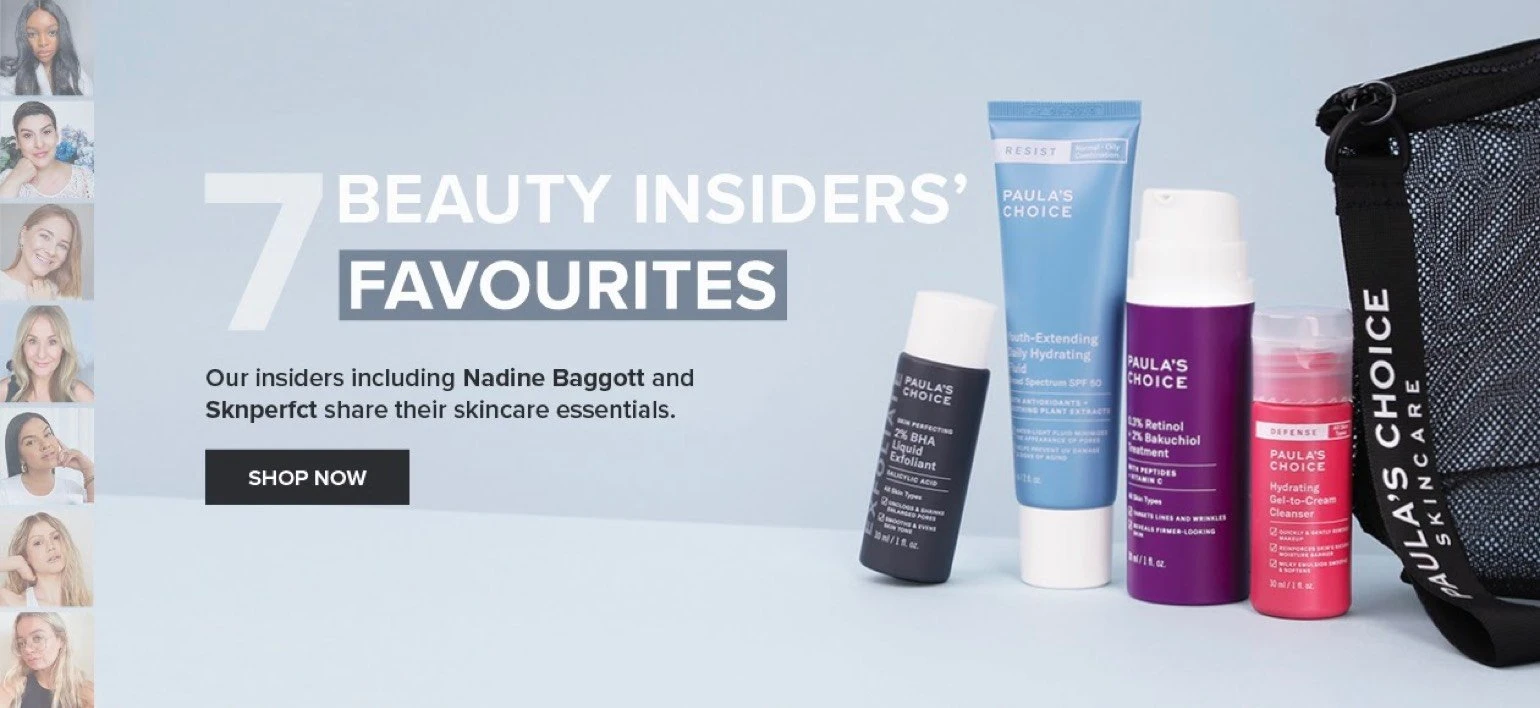
For example, Skincare brand Paula’s Choice features beauty insiders on their landing page and draws potential customers towards specific products. If these products are good enough for these top beauty influencers, then they must be good!
This type of expert social proof is especially useful for e-commerce as customers are unable to see the products beforehand, but they know they can trust the experts.
4. Media mentions
More commonly known by “As Seen In” content, highlighting your media mentions is great for establishing credibility and trustworthiness. As soon as customers get to your landing page, they’ll know your products are legitimate and reputable.
This content can include headlines, image and copy with the following:
Media mentions (i.e. As Featured in Time Magazine)
Awards (i.e. Online Retailer of the Year)
Rankings (i.e. Voted Best in Chicago)
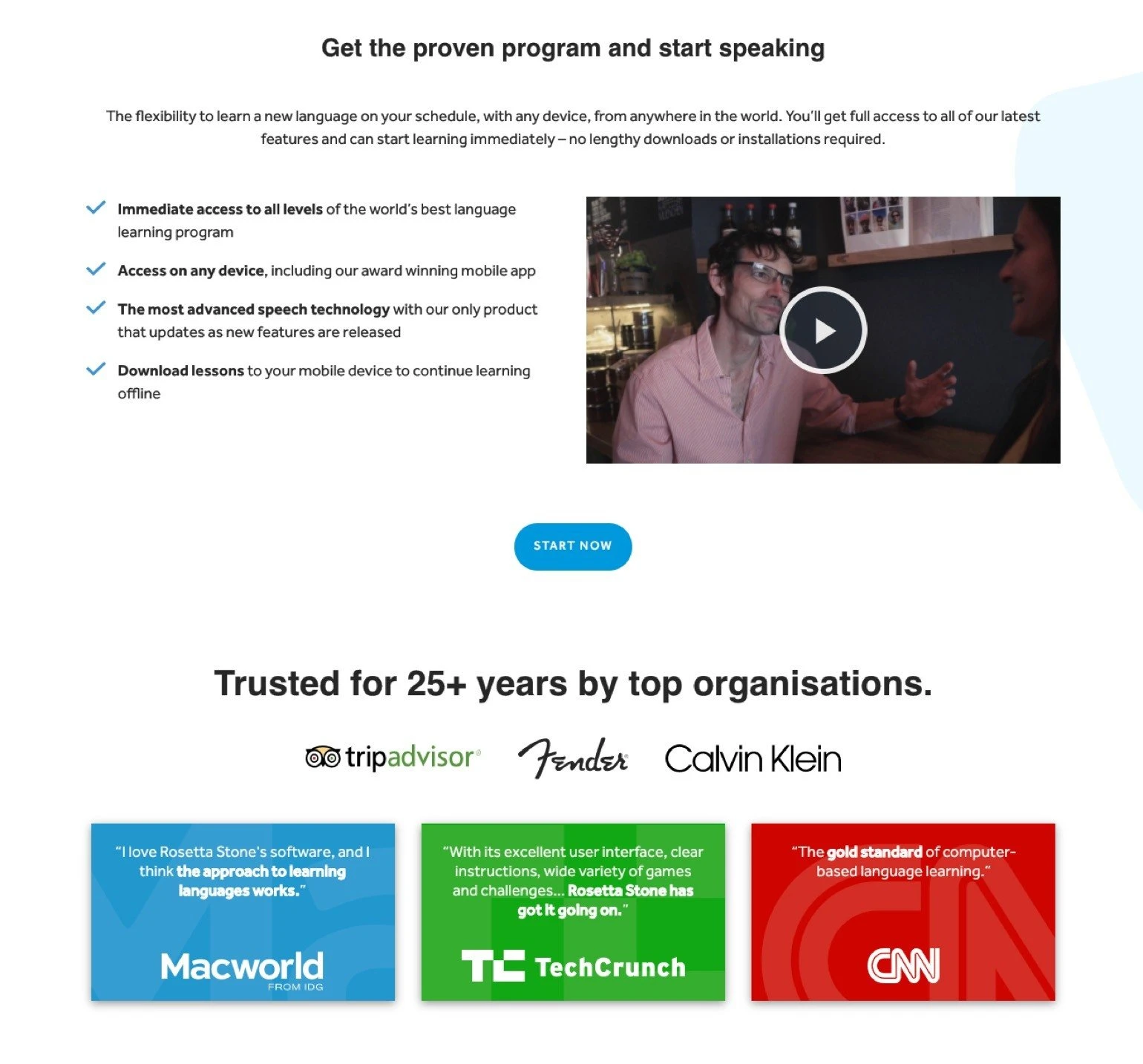
A great example of using media mentions comes from Rosetta Stone. The language learning subscription service features mentions from top publications like CNN and Tech crunch, using quotes and logos to visually convey the endorsements. While it’s not the primary focus of the landing page, these media mentions provide strong support to the headline saying that it is the “proven program” to learn languages.
5. Brand stats
Sharing numbers related to your brand is a useful way to show “Wisdom of the Crowd”. These stats will show off your brand’s popularity and make others want to be part of it too.
You can get creative when it comes to choosing what numbers you want to feature. This can include:
Number of Customers (i.e. Helping over 1 Million People)
Years in business (i.e. with 20+ year of experience)
Social Shares (i.e. Favorited by 120,000 people)
Range in Geography (i.e.in 100+ countries)
This is also an opportunity to generate FOMO (the fear of missing out). Customers will see what others are doing, and they’ll want to take advantage of every opportunity so they don’t miss out.
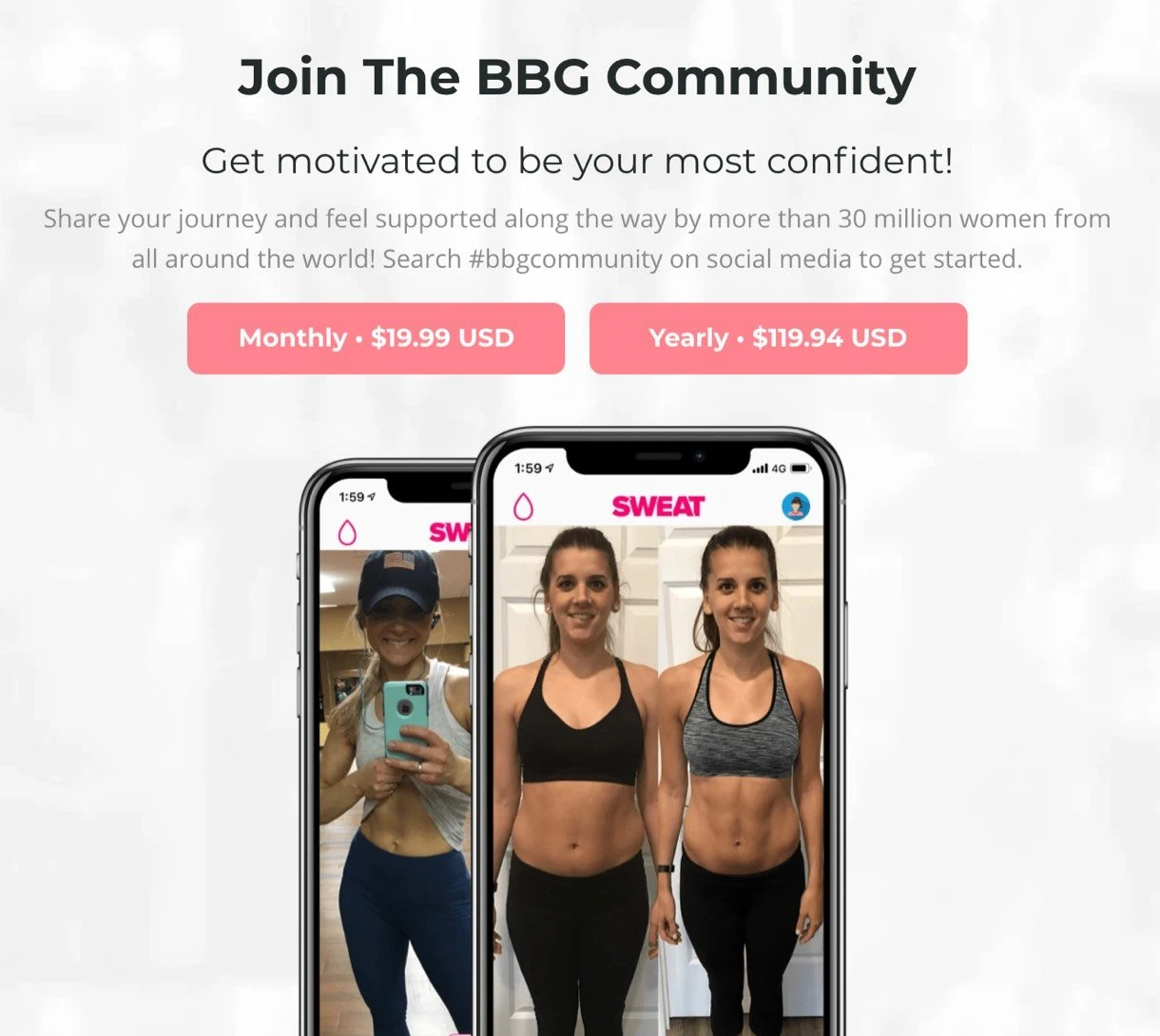
For example, fitness coach Kayla Itsines capitalizes on her large customer base of 30 million by making it a headline on her website. With this strategy, customers will want to feel part of the community and not miss out on the chance to shed some pounds.
6. Customer favorites
Use customer buying trends for social proof content.
Featuring the top-selling, popular products on a landing page is an effective way to encourage customers to make a purchase. Especially for those who are on the fence about buying, as their decision will be confirmed when they see the customer buying trends.
It’s simple: when a lot of people are buying a product, others will want to as well.
This strategy could be used for bottom-funnel landing pages focused around one specific product. Include social proof content and a clear CTA that directs customers to purchase the product.
This could be headlines and copy like:
“Customer Favorite”
“Top Seller”
“Most Loved”
“Trending Now”
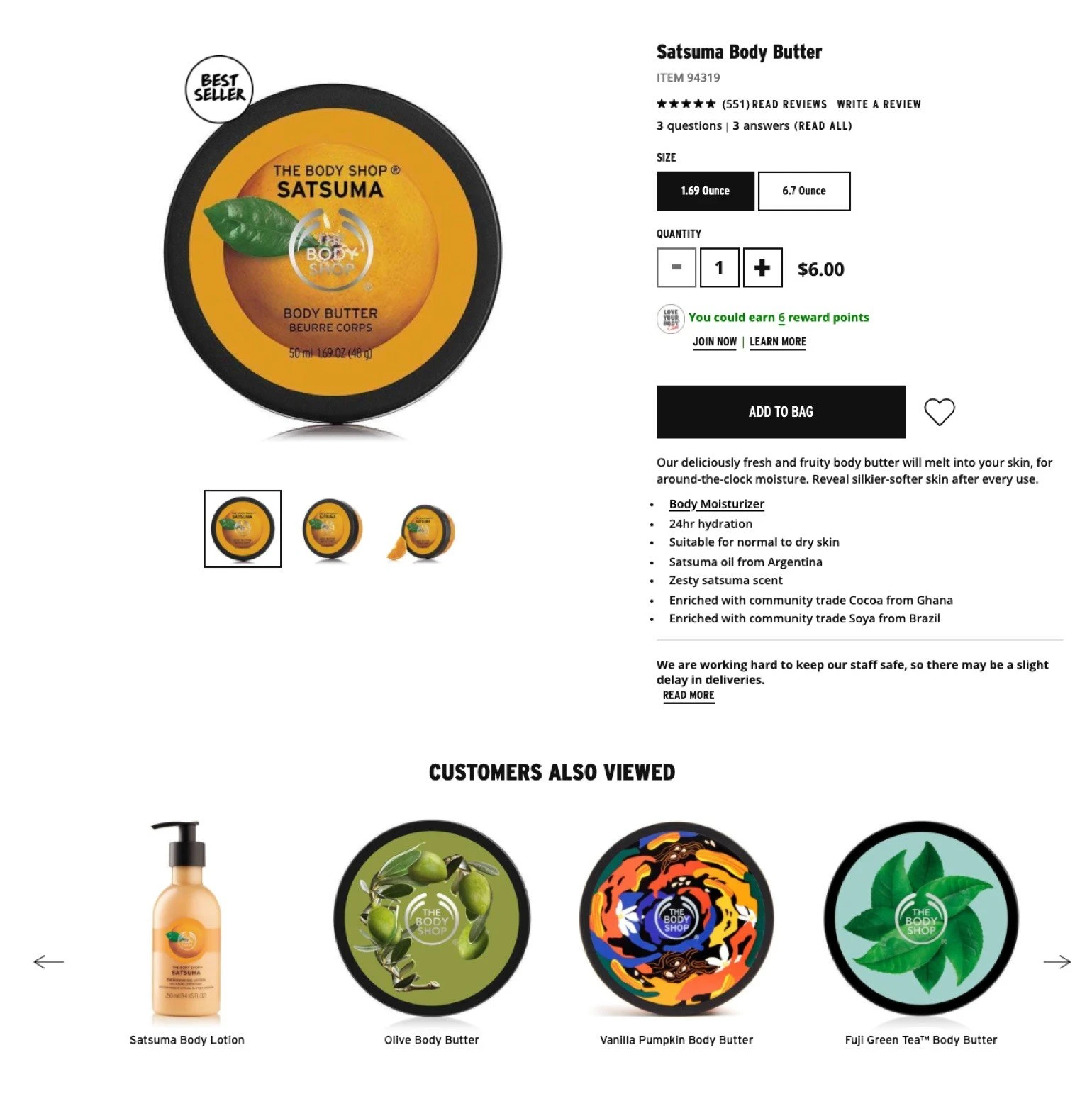
This is yet another chance to apply FOMO.
Combine your popular products with urgency to prompt customers to take action—such as by using headlines like “Going Fast” or “Almost Gone”. This combination can help boost conversion rates, with 60% of people making purchases within 24 hours as a result of FOMO.
Similarly, you can also use social proof for recommendations like “Other Customers Also Bought” or “You Might Also Like”. For example, The Body Shop adds a small “Best Seller” tag to certain products, as well as a section featuring recommendations from other customers.
7. User-generated content
Featuring user-generated content on landing pages is another way to positively influence customer buying behavior. So much so that 79% of people say user-generated content impacts whether they buy or not.
User-generated content (UGC) is any content that comes from your customers. This can be anything from user posts, tweets, hashtags, images, videos, blogs and reviews.
The best way to collect UGC is through social media with contests, giveaways and affiliate marketing programs.
This content makes landing pages more customer-focused, such as featuring customer-submitted images or social media shout outs in headlines.
UGC can also be the landing page itself. A top-funnel landing page can showcase customers and how they used products as a way to spark interest and inspiration.
For example, the furniture store Crate and Barrel encourages UGC by having a dedicated customer spotlight. Customers can submit via their website or using the hashtag #cratestyle on social media. The customer submissions are then posted on a landing page, and users can click on images to buy the products that are featured.
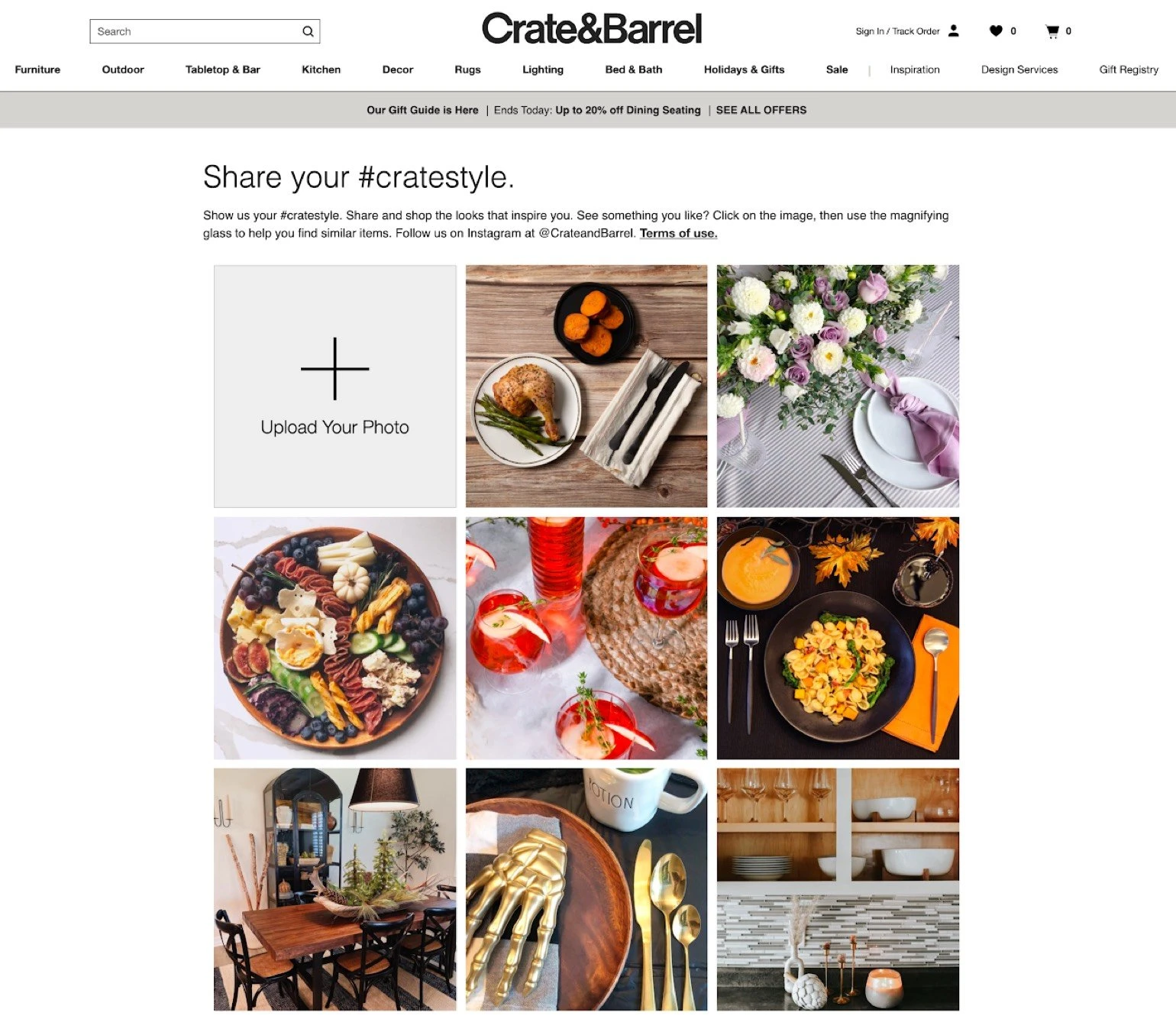
Your turn to use social proof
Because social proof works and is becoming more popular, this is one strategy that should not be overlooked. Using the examples above, you can begin incorporating social proof into your landing page content, and using A/B tests to find out what leads to increased conversions. Happy social proof-ing!

Following degrees in journalism and intercultural communication, I left the US for a new adventure in Amsterdam, the Netherlands. Luckily enough, I found my sweet spot as a Content Marketer for Tapfiliate.com. Now, my days are spent writing marketing content, cycling around canals and attempting to master the Dutch language.
